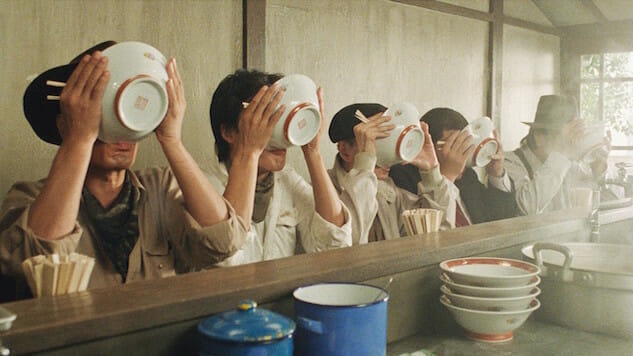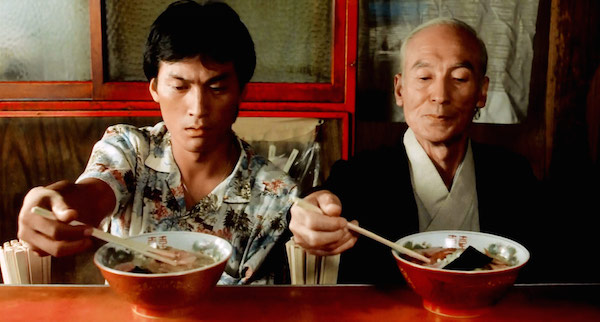30 Years Later, Tampopo Still Provokes Spirituality, Hunger and Lust

Have you ever considered the pure pleasure of eating? The ritual of it, and the act of it, and the moment the flavors burst on your tongue and the aroma overwhelms you. Food is what ties it all together, of course—what keeps us going, but figuratively and very literally. Yet there’s something about eating that exists almost outside the food itself, or perhaps surrounding the food. It’s a spiritualism, baked into food’s very meaning, binding us to our own souls, and to others as well. As foodie culture has overtaken the mainstream, feeding us an endless array of documentaries about chefs and their creations, some sense for food’s spiritual quality has been lost, subsumed by an attention to the art of creation rather than the religiousness of consumption. Cinema stands as a bulwark against that separation, often luxuriating in the space food occupies in our collective feeling, taking immense pleasure, not from eating, but from watching people eat. Few films do this better than Juzo Itami’s Tampopo.
Tampopo is all about food’s centrality in the spirit. The Japanese comedy-western-gangster film about a group of unlikely men trying to help a woman, Tampopo, turn her third-rate ramen restaurant into the best in town makes food its driving force. Alongside the main story are a number of vignettes and another secondary story, all about food. There is cooking, of course. There can’t be dining without cooking. But it is the experience of eating that’s foregrounded. An early scene involves a master ramen eater teaching the ways of ramen—”apologize to the pork,” the master instructs—and sets the tone for the film. It’s irreverence about reverence itself. The film is extremely funny, but completely serious in its appreciation of food and the power of eating, and of sharing a dining experience with others.
Few things are more cinematic than a meal. Where cinema usually prizes bold kineticism or staid formalism, watching people eat offers a distinct combination of the two. Consider the steps: looking at the food, taking it in, smelling it, picking it up, considering it for a moment before taking a first bite, letting the taste wash over and then going in for more. Small moments all, but collectively overpowering, and perfect for a cinematic eye. Then there’s the ritual surrounding the eating itself. Taking a seat at at a table among others, exchanging ideas and emotions over food, often hiding true feelings beneath the act of eating. Connections between people forced to the fore by a mutual need, and often boxed in by custom or tradition. Every meal in a costume drama, for example, brims with energy as conversation and etiquette come to a head, all over the most delectable meals. Recall the parade of dinners in Scorsese’s The Age of Innocence, with their stately air and lavish cooking, where as much is said in glances as in words, and the precise moment a character decides to eat can speak volumes about their buried intentions.
-

-

-

-

-

-

-

-

-

-

-

-

-

-

-

-

-

-

-

-

-

-

-

-

-

-

-

-

-

-

-

-

-

-

-

-

-

-

-

-









































